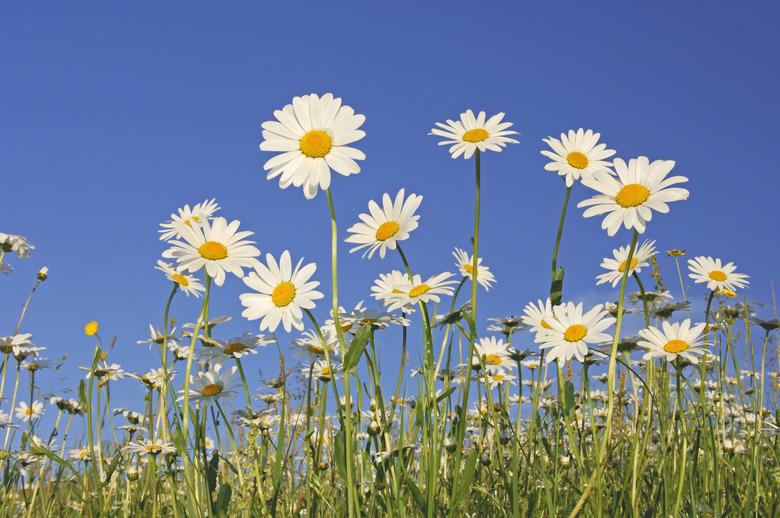What Is The Difference In The Looks Of Daisies And Chamomile?
Chamomiles are daisies, but all daisies aren't chamomiles. Chamomile flowers, with their pretty white petals around a yellow eye, are often described as daisylike, and that's for good reason. They not only resemble daisies, but they are also members of the large daisy plant family Asteraceae.
Tip
It is not possible to describe the differences between a daisy and a chamomile because of the wide variety of flowering plant species that are commonly called daisies.
Meet the Daisy Family
When someone mentions a daisy, they usually have in mind a small flower with a round yellow center surrounded by one or more rings of white rays. Botanically speaking, however, "daisy" means something else entirely. It refers to a big group of flowering plants in the plant family Asteraceae.
Many flowers with ray-type petals are in the Asteraceae family, including aster flowers (which give the family its name) and also gerbera daisies and sunflowers. Various species of these plants can be found around the globe, including North America, Europe, and Africa. Are chamomile in the same family? You guessed it — they are.
Meet the Chamomile
Chamomile (Matricaria recutita) is one of the many types of flowering plants in the Asteraceae (daisy) family. There are two common types of chamomile: German and Roman. Both have small, daisylike blossoms with one row of white petal rays surrounding a yellow center.
Both types of chamomile grow wild in Europe and have been used for centuries for their medicinal qualities. Chamomile tea, made from the dried flowers of either chamomile species, is among the world's most popular herbal teas. Both are hardy to U.S. Department of Agriculture plant hardiness zones 2 through 8.
German chamomile is an annual herb that grows to 24 inches tall and 12 inches wide. Roman is shorter and a perennial that spreads by creeping, rooting stems. German is used more often for herbal tea thanks to the slightly bitter taste of Roman chamomile.
Compare Chamomile and Daisies
The extensive daisy family of plants includes flowering plants with yellow, pink, and white petals; plants that are tall, and plants that are small; and some with a lovely fragrance and some with none. Given the wide variety of flowering plant species that are commonly called daisies, it is not possible to describe the differences between a daisy and a chamomile.
Your best bet is to figure out if the plant you are looking at is a chamomile. If not, it is likely to be a daisy. Identify chamomile by its 1-inch-wide flowers. Look for centers packed with true flowers that are yellow and tubular. These are surrounded by up to 20 white petals that curve backward a little. Check for an aromatic fragrance and a slight notch at the end of each ray.
